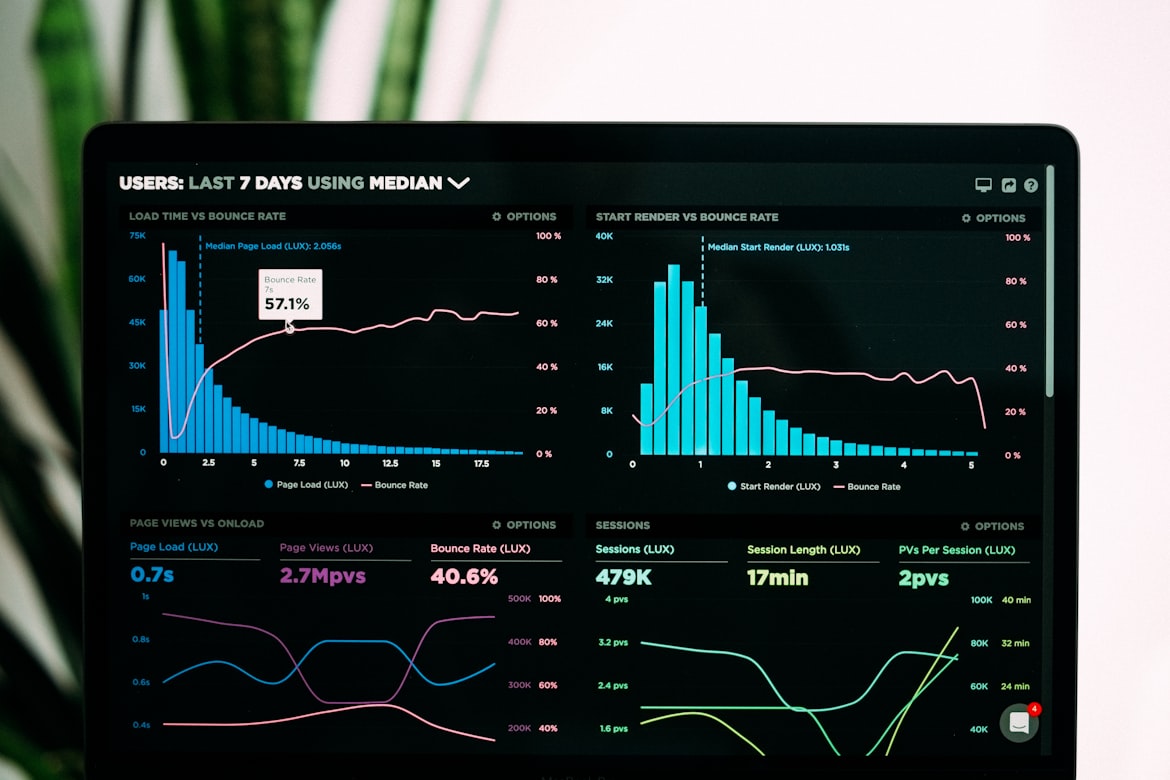What is DynamoDB? A Comprehensive Guide to AWS's NoSQL Database in 2025

Introduction
In today’s fast-paced digital landscape, businesses need databases that can handle massive scale, deliver consistent performance, and adapt to changing requirements. Amazon DynamoDB has emerged as a leading solution for these challenges, powering everything from small applications to some of the world’s largest digital services.
This comprehensive guide will explain what DynamoDB is, how it works, its key features, and when to use it. Whether you’re new to NoSQL databases or evaluating DynamoDB for your next project, you’ll gain a solid understanding of this powerful AWS service.
What is Amazon DynamoDB?
Amazon DynamoDB is a fully managed, serverless NoSQL database service provided by AWS (Amazon Web Services). It’s designed to deliver consistent, single-digit millisecond performance at any scale while eliminating the operational burden of managing database infrastructure.
At its core, DynamoDB is:
- A NoSQL database: Unlike traditional relational databases, DynamoDB uses a non-relational, schema-less data model
- Fully managed: AWS handles all administrative tasks like hardware provisioning, setup, configuration, and maintenance
- Serverless: There are no servers to manage, patch, or maintain
- Highly available: Data is automatically replicated across multiple Availability Zones
- Highly scalable: Tables can scale horizontally without performance degradation
- Fast and consistent: Delivers single-digit millisecond response times at virtually any scale
DynamoDB was launched in 2012, building on technologies and lessons from Amazon’s internal Dynamo system. It has since become one of AWS’s flagship database services, handling trillions of requests per day for applications worldwide.
How DynamoDB Works
Understanding DynamoDB’s core architecture helps explain its capabilities and how it differs from traditional databases.
Basic Data Structure
DynamoDB organizes data into tables, which contain items (similar to rows in a relational database), and each item has attributes (similar to columns). However, unlike relational databases, DynamoDB doesn’t require a fixed schema – each item in a table can have different attributes.
The fundamental components include:
- Tables: Collections of data items
- Items: Individual data records within a table (up to 400KB each)
- Attributes: Data elements within items (name-value pairs)
- Primary Keys: Unique identifiers for each item, consisting of:
- Partition Key: Determines where data is stored (also called a hash key)
- Sort Key: Optional second part of the primary key that sorts items within a partition (also called a range key)
Partition-Based Architecture
DynamoDB distributes data across multiple partitions (storage allocations) based on the partition key. This architecture enables:
- Horizontal scaling: Add more partitions as your data grows
- Distributed processing: Queries can be processed in parallel across partitions
- Balanced workload: Well-designed keys distribute traffic evenly
When you write an item to DynamoDB, the service:
- Uses the partition key’s value to determine which partition should store the item
- Within that partition, organizes items by sort key (if one exists)
- Replicates the data for high availability
This partitioned design is fundamental to DynamoDB’s ability to scale horizontally to virtually unlimited size while maintaining consistent performance.
Dynomate: Modern DynamoDB GUI Client
Built for real developer workflows with AWS profile integration, multi-session support, and team collaboration.
No account needed. Install and start using immediately.
- Table browsing across regions
- Flexible query & scan interface
- AWS API logging & debugging
Key Features of DynamoDB
DynamoDB offers a rich set of features that make it suitable for a wide range of applications:
Performance and Scalability
- Automatic scaling: Tables can handle virtually unlimited read and write throughput
- Consistent performance: Single-digit millisecond latency regardless of data size
- On-demand capacity: Pay-per-request pricing for unpredictable workloads
- Provisioned capacity: Cost-effective capacity for predictable workloads with auto-scaling
- Global Tables: Multi-region replication for global applications
Durability and Availability
- Multi-AZ replication: Data is automatically replicated across multiple Availability Zones
- 99.999% availability: Designed for mission-critical applications
- ACID transactions: Support for all-or-nothing operations across multiple items
- Point-in-time recovery: Restore to any point within the last 35 days
- On-demand backups: Create full backups for long-term retention
Advanced Capabilities
- Secondary indexes: Global and local secondary indexes for flexible queries
- DynamoDB Streams: Capture item-level changes for event-driven architectures
- Time To Live (TTL): Automatically expire items based on a timestamp
- DynamoDB Accelerator (DAX): In-memory caching for microsecond response times
- PartiQL support: SQL-compatible query language
Security and Compliance
- Encryption at rest: All data is encrypted by default
- Encryption in transit: HTTPS endpoints for secure communication
- Fine-grained access control: Via AWS IAM roles and policies
- VPC endpoints: Keep traffic within your private network
- Compliance certifications: Including PCI DSS, HIPAA, and SOC
When to Use DynamoDB
DynamoDB excels in specific scenarios where its design provides significant advantages:
Ideal Use Cases
- Web and Mobile Applications: User profiles, session management, and preferences
- Gaming Applications: Player data, game state, leaderboards, and session information
- IoT Applications: Device data, sensor readings, and time-series data
- Ad Tech: Click tracking, user behavior analysis, and campaign management
- Microservices: Stateless services that need persistent, high-performance storage
- Real-time Big Data: High-velocity data ingestion with predictable performance
- Serverless Applications: Pair with AWS Lambda for truly serverless architectures
Example Scenarios
- E-commerce Product Catalog: Store product information with fast lookups by product ID
- User Authentication System: Store user credentials and session tokens with millisecond access
- Content Management: Store documents, images metadata, and user-generated content
- Real-time Analytics: Track events as they happen with immediate data availability
- Mobile App Backend: Store user data, app settings, and cached content
When DynamoDB May Not Be Ideal
For balanced perspective, DynamoDB isn’t the best fit for every scenario:
- Complex Joins: If your application relies on many-table joins
- Ad-hoc Queries: If unpredictable, complex queries are your primary access pattern
- ACID Requirements Across Tables: While DynamoDB supports transactions, there are limitations
- Large Objects: Items are limited to 400KB (though you can use S3 for larger objects and store references)
- Data Warehousing: For analytical workloads, consider Amazon Redshift instead
DynamoDB vs. Traditional Relational Databases
To understand DynamoDB better, let’s compare it with traditional relational database management systems (RDBMS):
| Characteristic | DynamoDB | Traditional RDBMS |
|---|---|---|
| Data Model | NoSQL (key-value, document) | Relational (tables, rows, columns) |
| Schema | Flexible, schema-less | Rigid, predefined schema |
| Scaling | Horizontal (add partitions) | Primarily vertical (larger servers) |
| Query Language | DynamoDB API, PartiQL | SQL |
| Joins | Not supported natively | Fully supported |
| Transactions | Supported with limitations | Fully supported |
| Management | Fully managed by AWS | Self-managed or managed service |
| Use Cases | High-scale web apps, real-time workloads | Complex queries, reporting, analytics |
| Performance | Consistent regardless of scale | May degrade with scale or complex queries |
| Cost Model | Pay for throughput and storage | Pay for instance size and storage |
Getting Started with DynamoDB
If you’re interested in trying DynamoDB, here’s a quick overview of how to get started:
Creating Your First Table
- Sign in to the AWS Management Console and navigate to the DynamoDB service
- Click “Create table” and provide:
- Table name
- Partition key (and optional sort key)
- Capacity settings (on-demand or provisioned)
- Click “Create” and wait for the table to become active
Basic Operations
Once your table is created, you can:
- Create (Put): Add new items to your table
- Read (Get): Retrieve items by their primary key
- Update: Modify existing items
- Delete: Remove items from the table
- Query: Find items by primary key or secondary index
- Scan: Search the entire table (use sparingly on large tables)
Example: Storing and Retrieving Data
Here’s a simple example of storing and retrieving user data with the AWS SDK for JavaScript:
// Adding an item
const params = {
TableName: 'Users',
Item: {
UserId: 'user123',
Name: 'John Doe',
Email: 'john@example.com',
SignupDate: '2025-03-15'
}
};
await dynamoDbClient.put(params).promise();
// Retrieving an item
const getParams = {
TableName: 'Users',
Key: {
UserId: 'user123'
}
};
const { Item } = await dynamoDbClient.get(getParams).promise();
console.log(Item); // Returns the user dataFamiliar with these Dynamodb Challenges ?
- Writing one‑off scripts for simple DynamoDB operations
- Constantly switching between AWS profiles and regions
- Sharing and managing database operations with your team
You should try Dynomate GUI Client for DynamoDB
- Create collections of operations that work together like scripts
- Seamless integration with AWS SSO and profile switching
- Local‑first design with Git‑friendly sharing for team collaboration
Development and Testing
For development and testing, you can:
- Use the free tier, which includes 25 WCUs, 25 RCUs, and 25GB of storage
- Run DynamoDB locally on your development machine
- Use the AWS Console to explore and modify data
- Leverage tools like Dynomate for more intuitive data visualization and management
DynamoDB Pricing and Free Tier
DynamoDB’s pricing model is based on:
- Read/write throughput: Either on-demand (pay per request) or provisioned capacity
- Storage: Pay for the data you store, billed per GB-month
- Additional features: Backups, global tables, streams, etc.
The AWS Free Tier includes:
- 25 read capacity units (RCUs)
- 25 write capacity units (WCUs)
- 25 GB of storage
- Enough for many small applications or development environments
For detailed pricing information, see our DynamoDB Pricing Calculator.
Best Practices for DynamoDB
To get the most from DynamoDB, follow these best practices:
- Design for your access patterns first, not for normalized data
- Choose high-cardinality partition keys to distribute workload evenly
- Use sparse indexes to reduce costs and improve performance
- Implement TTL for data that should expire
- Consider single-table design for related entities with shared access patterns
- Use on-demand capacity for unpredictable workloads
- Monitor and optimize your capacity usage regularly
- Implement retry with exponential backoff for throttled requests
For more optimization tips, check our DynamoDB Best Practices guide.
Real-World DynamoDB Use Cases
Many prominent organizations rely on DynamoDB for critical applications:
Netflix
Netflix uses DynamoDB to store and serve metadata for its streaming service, handling over 1 trillion requests per day. The service powers Netflix’s recommendation engine, user preferences, and viewing history.
Lyft
Lyft uses DynamoDB to store ride information and driver locations, enabling real-time matching between riders and drivers. DynamoDB’s low-latency performance is crucial for this time-sensitive application.
Airbnb
Airbnb uses DynamoDB for various aspects of its platform, including storing user messages, wishlists, and other user-generated content. The ability to scale seamlessly during peak travel seasons is particularly valuable.
Pokemon GO
When Pokemon GO launched and became an overnight sensation, DynamoDB helped the game scale to handle millions of concurrent players, storing game state and player data.
Common DynamoDB FAQs
Is DynamoDB a relational database?
No, DynamoDB is a NoSQL database. It uses a key-value and document data model rather than the table-row-column structure of relational databases. While it supports some relational concepts like transactions, it does not support SQL joins or foreign key constraints.
Is DynamoDB serverless?
Yes, DynamoDB is fully serverless. You don’t need to provision, manage, or maintain any servers. AWS handles all the underlying infrastructure, allowing you to focus on your application.
How does DynamoDB differ from MongoDB?
Both are NoSQL databases, but DynamoDB is a fully managed AWS service with guaranteed performance, while MongoDB is a document database that can be self-hosted or used as a managed service. DynamoDB has automatic scaling and a simpler data model, while MongoDB offers more flexible querying and indexing. For a detailed comparison, see our DynamoDB vs MongoDB article.
What is DynamoDB’s maximum item size?
Each item in DynamoDB can be up to 400KB in size, including attribute names and values. For larger objects, it’s recommended to store them in Amazon S3 and reference them from DynamoDB.
Can DynamoDB handle SQL queries?
DynamoDB supports PartiQL, a SQL-compatible query language, but with limitations compared to traditional SQL. It doesn’t support complex joins or subqueries. The primary query mechanism is the DynamoDB API with key-based access patterns.
Is DynamoDB ACID compliant?
DynamoDB supports ACID (Atomicity, Consistency, Isolation, Durability) transactions for up to 100 items or 4MB of data across one or more tables. However, it doesn’t support all the isolation levels found in traditional relational databases.
How much does DynamoDB cost?
DynamoDB pricing is based on the capacity mode you choose (on-demand or provisioned), the amount of data stored, and additional features used. There’s a free tier that includes 25 RCUs, 25 WCUs, and 25GB of storage. Check our DynamoDB Free Tier article for more details.
Switching from Dynobase? Try Dynomate
Developers are switching to Dynomate for these key advantages:
Better Multi-Profile Support
- Native AWS SSO integration
- Seamless profile switching
- Multiple accounts in a single view
Developer-Focused Workflow
- Script-like operation collections
- Chain data between operations
- Full AWS API logging for debugging
Team Collaboration
- Git-friendly collection sharing
- No account required for installation
- Local-first data storage for privacy
Privacy & Security
- No account creation required
- 100% local data storage
- No telemetry or usage tracking
Conclusion
Amazon DynamoDB represents a paradigm shift in database technology, offering unparalleled scalability, performance, and availability without the operational overhead of traditional databases. Its serverless design, combined with a flexible data model, makes it ideal for a wide range of modern applications, particularly those that need to scale rapidly and deliver consistent performance.
As with any technology, the key to success with DynamoDB lies in understanding its strengths and limitations, designing your data model around your specific access patterns, and following best practices.
Whether you’re building a startup application or modernizing enterprise systems, DynamoDB provides a solid foundation for your data needs in today’s cloud-first world.
Ready to explore more DynamoDB topics? Check out these related articles:
- DynamoDB Tutorial for Beginners
- DynamoDB Partition Key vs Sort Key
- DynamoDB Advantages and Disadvantages
- DynamoDB Data Types
For help managing and visualizing your DynamoDB tables, try Dynomate - our intuitive tool designed to simplify DynamoDB development and administration.



